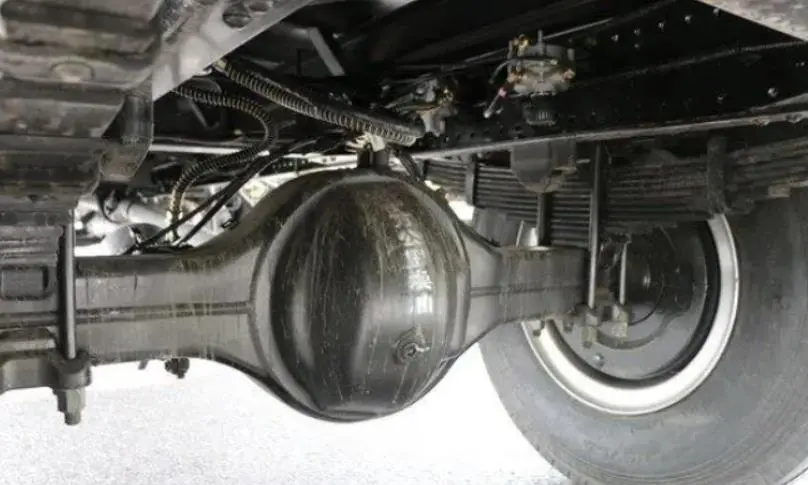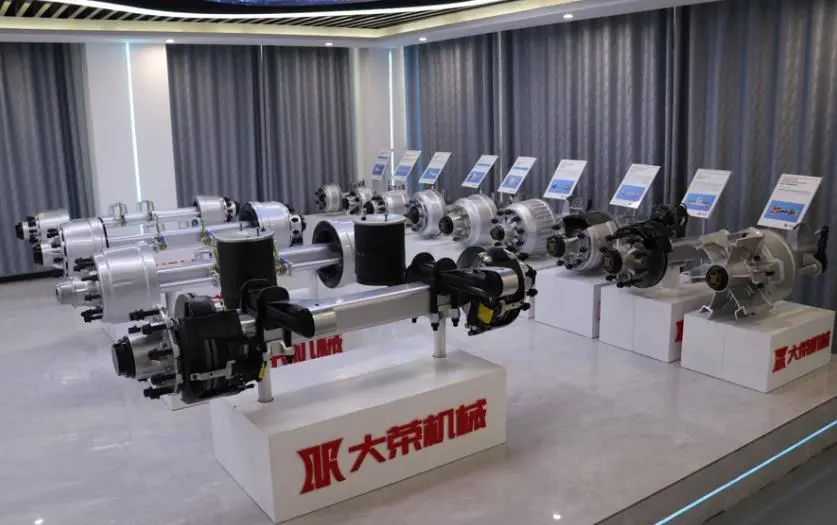What is the difference between a reduction axle and a trailer axle?
From a classification perspective, the reduction axle belongs to the drive axle, consisting of the main reducer, differential, half shaft, drive axle housing, and other components. It is located at the end of the vehicle's transmission system, and its function is to change the speed and torque of the transmission and transmit it to the vehicle's drive wheels. If it is a drive wheel with steering function, it will also be equipped with constant velocity universal joint.

The most common types are usually single stage reduction axles and double stage reduction axles.
A single speed reduction axle, commonly known as a "half axle axle", is also referred to by some car owners as a "big belly axle". The single stage reduction axle mainly consists of a driving bevel gear and a driven bevel gear, commonly known as corner teeth and crown teeth, such as some common models 435, 440, 457, 459, 460, 469, etc., which actually refer to the size of the crown tooth diameter.

The structure of a single stage reduction axle is relatively simple, with a light weight and a relatively low failure rate. Maintenance and upkeep are also simpler and more convenient, but the volume of the axle pack is too large, resulting in a small distance between the chassis and the ground, which to some extent affects the vehicle's passability.
In general, a single reduction axle has a small and fast speed ratio, which is relatively more suitable for roads with good road conditions. It is difficult to handle standard load transportation and may not be suitable for harsh transportation conditions.
The double reduction axle, commonly known as the "wheel side axle" or "wheel reduction axle", is a set of reduction transmissions added to the wheel side on the basis of the single reduction axle. The torque is amplified in two stages before and after, and then transmitted to the wheels. The advantage in driving force is very obvious.

In addition, the dual speed reduction axle has a small axle package, a large ground clearance, and good vehicle passing performance, making it suitable for harsh off-road and low-speed heavy load conditions, such as oil fields, construction sites, mines, as well as off-road and military vehicles.
Of course, the dual reduction axle is not perfect either. Its drawbacks are complex structure, poor transmission efficiency, and high fuel consumption when running. In addition, the wheel reducer takes on a lot of torque increase work, and heat is easily concentrated at the wheel end during high-speed driving, which can lead to tire explosions and is not suitable for long-distance high-speed transportation.

Whether it is a single stage reduction axle or a double stage reduction axle, it needs to withstand the vertical, longitudinal, and lateral forces acting between the road surface and the frame, as well as braking torque and reaction forces, during use. Providing driving force is its main performance. The rear axle of a trailer is different. From a classification perspective, the rear axle of a trailer belongs to a typical supporting axle, also known as a driven axle, which does not have driving or steering functions. Its main function is to bear the weight of the vehicle body and goods.

From a structural perspective, the trailer axle is much simpler, mainly composed of axle beams, wheel end components, camshaft assemblies, etc., and looks like a barbell in appearance. Its axle beam is integrated and runs between two wheels, which is also to provide stronger load-bearing force. In terms of braking methods, trailer axles are mainly divided into drum brakes and disc brakes, and small tonnage trailer axles can also be made into electromagnetic brakes. From the perspective of style, the trailer axle can be divided into drum type, disc type, low flat plate, concave type, three line six axle, etc., matching different vehicles and transportation conditions.







